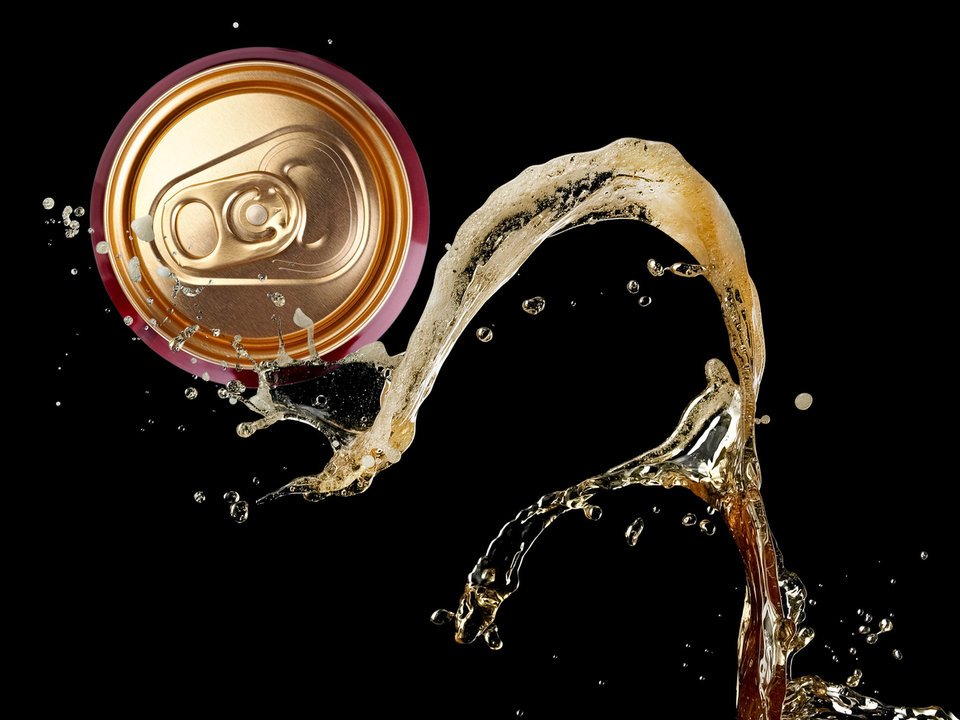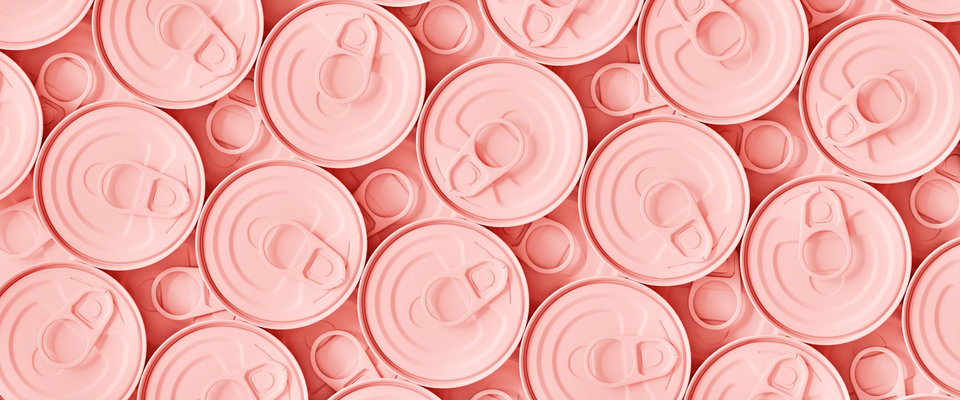sustainability | metals
Design for sustainability: making a case for metal cans
Russell Wiseman, head of global beverage solutions at Domino Printing Sciences, discusses the increasing demand for aluminium and steel as plastic packaging alternatives and the options available for manufacturers on the journey towards sustainability.
T
he increasing pressure that companies are under to prove their eco-credentials is well documented.
However, rethinking the way products are packaged or opting for more environmentally friendly packaging solutions can pose a significant risk to manufacturers, as small changes can have a knock-on effect on production processes.
An often-forgotten consideration is ensuring that the new materials can be reliably and legibly coded with machine or human-readable codes that last the required life of a product without impacting its recyclability.
Old materials to solve new problems
Recyclability and sustainability are high-priority areas when it comes to choosing the right packaging solution. Plastics, once renowned for their superior packaging qualities, have started to fall out of favour with some consumers, as issues with disposal and recycling have come to the forefront of public discussion.
Today, materials that support moves towards a circular economy – where packaging can be reused or recycled infinitely within a closed-loop system – are of increasing importance. This trend has seen some manufacturers going back to basics, with traditional, reliable, and highly recyclable packaging solutions in the form of aluminium and steel cans.
Aluminium and steel are the most recycled substrates the world over, with rates for recycling in Europe currently exceeding 2030 targets outlined in the European Commission’s Circular Economy Package.
These materials are also unique in the current packaging landscape; whereas plastics have a limit on their recyclability, particularly where food contact may be involved, aluminium and steel can be reused infinitely with no loss of properties, providing an exceptional option for establishing closed-loop, circular recycling of a product.
The pay off between food, safety and low carbon emphasises the need for innovation.
Take food cartons, for example. Currently, a sheet of aluminium is required to distribute food safely from produce to consumer, preserving the product for months without the need for artificial preservatives.
Food preservation has been crucial for centuries, and in difficult times – during pandemics, for example, when more people must stay at home – it becomes ever more important. A premature commitment to entirely plant-based packaging will lead to both an increased need for fresh products and with that an increase in waste.
The pay off between food, safety and low carbon emphasises the need for innovation. Tetra Pak, has committed to developing climate smart and renewable packaging solutions for our customers – such as the creation of paper straws, tethered caps and cartons made with plant-based plastics – to aid the creation of a low carbon circular economy.
An environmentally friendly packaging solution
In recent years, we have seen increasing numbers of manufacturers making moves to adopt metal as a plastic packaging alternative.
The beverage sector, and in particular bottled water, is perhaps the most notable example of this trend, having been hit particularly hard by campaigns to reduce single-use plastics.
The switch is also particularly prevalent in the craft beer sector, which was once dominated by glass bottles, but has seen sales of aluminium cans increase. In 2018, according to research released by the UK trade body for drinks cans, the Can Makers, the craft can market grew by 59% while sales of glass bottles of craft beer declined by 5%.
Size and weight may be the most notable advantage of cans in this market. A six-pack of 330ml cans is not only lighter than the equivalent in bottles – 84g in aluminium packaging versus 1.2kg in glass – but also smaller in physical size. Cans are therefore much more economical from a shipping perspective, and also much easier for a consumer to carry along to a BBQ or picnic.

The craft can market grew by 59% in 2018.
Similarly, charitable efforts are on the rise, with the foundation of organisations such as CannedWater4Kids (CW4K), a US charity committed to delivering clean, safe, and sustainable drinking water projects to communities around the world. CW4K funds its initiatives with donations as well as sales of its ‘Drinking water – with a purpose’, which is packaged in 100% recyclable, sustainable aluminium bottles and cans.
“Not only are aluminium cans the single-most recycled beverage package in the US, but they are also infinitely recyclable. Few containers can say that,” says Peter Gorman, CW4K chief marketing officer and board member.
To can is to protect
Product packaging provides a very valuable service to brands, to ensure compliance with legislation by displaying regulatory information, as well as batch, product, and supply codes that allow products to progress safely through supply chains.
It is also the advertising space on a shelf that protects a brand’s image and makes a product stand out against its competitors. Indeed, major international can manufacturer Crown advertises its canned solutions as providing a “360-degree billboard” for brand promotion.
Too often, though, debates surrounding sustainable packaging ignore another key role of product packaging – to protect its contents.
Canned products can be stored for years with little loss of quality.
The Industry Council for Packaging and the Environment estimates that of all the energy used in producing the food contents of one person’s weekly shop, only 6.5% can be attributed to primary packaging and 51% to food supply.
As an insurance product, aluminium and steel packaging are very effective. Both materials are robust and hardwearing enough to protect contents during transport while providing an impenetrable barrier against light and oxygen. So, canned products can be stored for years with little loss of quality.
Though there has been some misperception surrounding the quality of canned foodstuffs in the past, leading can manufacturers and food writers have begun speaking out about the benefits of canned food. Included in the mix is Jack Monroe, British food blogger and author of the newly released Tin Can Cook: 75 simple store-cupboard recipes – the first tinned food recipe book since 1939.

75% of all aluminium ever produced is still in circulation today.
Exploring plastic packaging alternatives
Today, both aluminium and steel are widely and easily recycled on a global level, so much so that a metal can purchased and recycled today could be back on the shelf within 60 days. In fact, it is suggested that as much as 75% of all aluminium ever produced is still in circulation today. The result of these high recycling rates is less pollution and a steady supply of resources for the future – the very definition of sustainability.
Contamination and degradation are also not an issue when it comes to aluminium and steel, as recycling methods essentially restore the materials to their virgin state. When a can goes through a recycling process, everything – including the label and any inks or coatings on the original can – is burned away before melting with no effect on the overall recyclability.
This ease of recycling can present an opportunity for manufacturers when it comes to thinking about a coding solution – particularly when coding with inks. While some new sustainable packaging materials in the form of recycled plastics, paper and compostables can prove challenging from a coding perspective, recycled food and beverage cans have been part of the equation for years.
For some, a switch to recycled aluminium or steel could demonstrate a viable commitment to more environmentally friendly packaging.
Traditionally, continuous inkjet has been the technology of choice for coding onto aluminium and steel cans – it’s fast, flexible, and gets the job done, and is still a favoured solution among many manufacturers. More recently, fibre laser solutions have emerged as a coding solution for non-ferrous aluminium cans that is energy efficient and removes the use of solvents, inks, and other consumables which carry storage safety requirements from production sites.
As global attitudes towards sustainability change, many organisations are already seeking to innovate beyond plastic packaging, setting ambitious targets to reduce virgin plastic use, and embracing the alternatives. Unilever, the multinational consumer goods company behind Dove and Surf, has made commitments to halve the use of new plastic within the next five years and has also unveiled several reusable packaging innovations including a refillable deodorant stick made from stainless steel.
For some, a switch to recycled aluminium or steel could demonstrate a viable commitment to more environmentally friendly packaging, but it is important to understand the available options and determine the right solution to an organisation’s individual needs.
As part of this, organisations must consider the other effects this could have on their production line. Considering coding and marking requirements early on will retain competitiveness without compromising on quality or value, allowing packaging to become part of the solution, rather than a challenge to sustainability.
Background image blablablablablablablabla